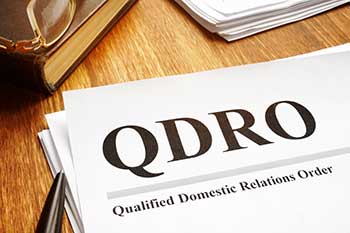-
QDRO
-
$ 995 /no sales tax
-
- Divides Retirement
- Prepped and Filed
- No Court Fees!
-
QCO
-
$ 995 /no sales tax
-
- Divide Military Pension
- Prepped and Filed
- No Court Fees!

Contact Us!
What is a QDRO?
 In a nutshell, a QDRO is an acronym for Qualified Domestic Relations Order. A QDRO is used to divide a retirement account into two separate accounts, following a divorce (or some other type of legal judgment).
In a nutshell, a QDRO is an acronym for Qualified Domestic Relations Order. A QDRO is used to divide a retirement account into two separate accounts, following a divorce (or some other type of legal judgment).
QDRO Meaning
Here’s The Government Definition: (Source)
A “qualified domestic relations order” (QDRO) is a domestic relations order that creates or recognizes the existence of an “alternate payee’s” right to receive, or assigns to an alternate payee the right to receive, all or a portion of the benefits payable with respect to a participant under a retirement plan, and that includes certain information and meets certain other requirements.
Reference: ERISA § 206(d)(3)(B)(i); IRC § 414(p)(1)(A)
How does the QDRO process work?
So for example, let’s say Party A has a General Motors 401K Savings Plan. Even though Party B has never worked at General Motors, after the judge signs the QDRO, then they will both have GM 401K plans. Although one person never worked at General Motors, they will have a 401k through them.
Since both individuals will have their own account, each party can do what they want. They can cash out the retirement plan, however they would take a tax hit. They can roll it over into their own 401K, in order to have everything in one account. Additionally, they can do nothing and keep the retirement account in place.
It’s just that simple. We prepare it and then both parties sign the document. Then we file the document at court.
The judge will sign it and mail it to our client. Once our client receives the document, they will send it to the QDRO administrator.
That’s pretty much it!
What is a “qualified domestic relations order?”
In order to be recognized as a QDRO, an order must be a ‘domestic relations order. A domestic relations order is a judgment, decree, or order (including the approval of a property settlement) that is made pursuant to state domestic relations law (including community property law) and that relates to the provision of child support, alimony payments, or marital property rights for the benefit of a spouse, former spouse, child, or other dependent of a participant.
A state authority, generally a court, must issue a judgment, order, or decree or otherwise formally approve a property settlement agreement before it can be a “qualified domestic relations order” under ERISA.
The mere fact that a property settlement is agreed to and signed by the parties will not, in and of itself, cause the agreement to be a qualified domestic relations order.
There is no requirement that both parties to a marital proceeding sign or otherwise endorse or approve an order. It is also not necessary that the retirement plan be brought into court or made a party to a qualified domestic relations proceeding for an order issued in that proceeding to be a “domestic relations order” or a “qualified domestic relations order.”
Indeed, because state law is generally preempted to the extent that it relates to retirement plans, the Department takes the position that retirement plans cannot be joined as a party in a qualified domestic relations proceeding pursuant to state law. Moreover, retirement plans are neither permitted nor required to follow the terms of qualified domestic relations orders purporting to assign retirement benefits unless they are QDROs.
Reference: ERISA § 206(d)(3)(B)(ii); IRC § 414(p)(1)(B); Advisory Opinion
Do I need a QDRO Attorney?
Arizona law does not require an attorney to prepare a qualified domestic relations order. There are various legal professionals who are approved by the Arizona Supreme Court to prepare QDROs.
Many people hire a paralegal or certified legal document preparer to draft their QDRO. There are many reasons people choose to not hire a QDRO attorney, but the main reason is to save money and not spend thousands of dollars on legal documents.
How much does a QDRO cost for a pension?
The price it costs to have a QDRO prepared varies based on who is preparing the QDRO. A qualified domestic relations order can be prepared by a lawyer, paralegal, or certified legal document preparer.
If you choose to hire a QDRO attorney, you will pay at least $1,000 to have them prepare your QDRO. Occasionally people have more than 1 QDRO that needs to be prepared, so you would end up paying thousands of dollars to a QDRO attorney.
If you choose to have a paralegal or certified legal document preparer draft your QDRO, you can save yourself thousands of dollars! You can have a certified legal document preparer and paralegal at Affordable Family Law draft your QDRO today for $995.
What If My Spouse Refuses to Sign the QDRO?
If a judge orders that a retirement is supposed to be divided– and one person is not cooperating— that person is in Contempt of Court. At that point, you could file a Petition for Enforcement and serve your ex. You could bring the QDRO with you to the Enforcement hearing. The judge will likely have them sign it on the spot!



